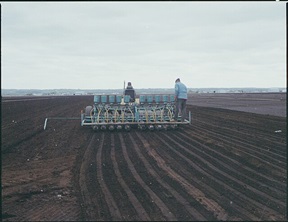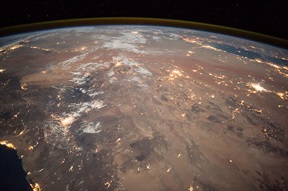For decades now precision agriculture has been offering numerous changes to the way we grow food. At its heart, it’s about using technology to gain a deeper understanding of what’s happening in the field, be it monitoring soil quality, predicting weather threats or tracking plant growth stages.

Tools like satellite imagery and data analytics allow modern growers to make decisions based on precise, real-time information rather than guesswork. This means they can apply water, fertilizers, and other inputs exactly where and when they’re needed, minimizing waste and reducing environmental impact. As today’s world shifts towards more biobased crop management strategies, precision agriculture offers a way to balance productivity with the preservation of natural resources.
The role of precision agriculture in biobased crop management
Biobased crop management is about working with nature instead of forcing it. Instead of relying on synthetic chemicals, it implies the use of natural fertilizers, plant extracts, and beneficial microbes to boost crop health and resilience. It’s like giving crops the tools made by nature itself, so they can thrive on their own. This approach not only helps farmers grow better crops, but also keeps the soil and environment healthy for the long haul, making farming more sustainable and connected to the land. However, the application of organic inputs also requires data to rely on. More so, the farm may still require minimal chemical fertilizers if necessary.
By harnessing precision agriculture satellite imagery data and its analysis, farmers can monitor a set of parameters necessary for making smart decisions: soil conditions, biomass amount, moisture levels and more. All that with unparalleled accuracy. Such precise information helps them determine the exact amount of whatever input is required, preventing overuse and minimizing runoff that can harm local ecosystems, especially if chemicals have to be used.

When it comes to water management, for instance, higher resolution satellite images can help detect moisture variations across different areas of a field, guiding irrigation systems to deliver water only where and when it’s needed. This reduces water consumption and preserves vital resources, even in regions prone to drought. Similarly, the targeted application of fertilizers ensures that nutrients are applied in the right quantities, minimizing excess that could otherwise leach into waterways and disrupt surrounding environments.
Biobased solutions further enhance this approach by integrating natural and sustainable inputs that work in harmony with the ecosystem. Organic fertilizers, biopesticides, and plant growth-promoting bacteria, when combined with precision technologies, not only optimize plant health but also reduce the dependency on chemical treatments that can degrade soil quality over time. This cooperation between technology and biobased products helps to increase yields while supporting biodiversity and maintaining long-term soil fertility.
Satellite imagery and data analytics in sustainable farming
High resolution real-time satellite imagery helps farmers monitor plant health and detect early signs of stress. Through indices like the Normalized Difference Vegetation Index (NDVI), satellites capture light reflections that reveal subtle changes in crop conditions, such as nutrient deficiencies or pest infestations. This enables farmers to respond with targeted interventions, reducing the need for broad-spectrum treatments and minimizing environmental impact.
Another advantage of using satellite technology is its ability to create detailed maps of field conditions, such as chlorophyll content and surface temperature. These insights allow agricultural managers to identify areas with uneven crop growth or potential disease outbreaks. By pinpointing these zones, they can apply treatments more efficiently, ensuring healthier crops while lowering costs.
Moreover, satellite imagery available for a long period of time provides the possibility of continuous monitoring, which means growers can track seasonal trends and changes. This long-term data allows for the development of better strategies to improve overall productivity and adapt to changing environmental conditions.
Key technologies supporting biobased precision agriculture
Biobased farming is currently driven by powerful technologies that blend innovation with sustainability: Artificial Intelligence (AI), Machine Learning (ML), and remote sensing. Together, they’re reshaping agriculture by offering smarter, more precise methods for managing farmlands.
With the ability to analyze massive datasets — like weather patterns, historical yields, and sensor readings — AI can predict outcomes and suggest the best interventions for various scenarios. Machine Learning goes even further by recognizing subtle patterns that humans might miss, such as early indicators of pest infestations or nutrient deficiencies. This means that farmers can act before problems spread, optimizing planting schedules and resource use to achieve better yields with fewer inputs.
High quality satellite images available thanks to remote sensing provide a unique above view of fields, capturing detailed data on everything from crop vigor to chlorophyll content. Unlike manual field inspections, these technologies scan entire landscapes in minutes, offering precise insights that help pinpoint areas of concern no matter how large or how far these areas are. This data feeds directly into AI systems, creating a dynamic feedback loop that enables close to real-time monitoring and predictive analysis.
When applied together, these technologies create a powerful ecosystem where data from satellites feeds directly into AI-driven platforms, resulting in real-time insights and recommendations. Farmers are no longer confined to reactive approaches but can implement predictive and prescriptive strategies. This integration is fundamental to advancing biobased farming, making it not just about growing crops, but about cultivating ecosystems where technology and nature coexist harmoniously.
Benefits of precision agriculture for biobased crop management
Generally, precision agriculture empowers biobased crop management by delivering highly accurate, data-driven insights. With technologies like high-res imagery and AI, farmers can target specific areas for intervention, reducing waste and conserving resources. The result is healthier growth hence higher yields and profits. While precision farming also minimizes environmental impact, it promotes sustainable practices that protect soil health and biodiversity. In essence, it turns agriculture into a system where every action is optimized, balancing productivity with sustainability.
Interesting? Then also read:
Perspectives for agriculture – the new farming
Towards precision agriculture with less environmental impact
Less input, more output and lower footprint through precision farming and digitalisation
